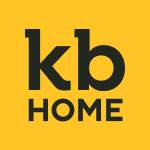KB Home Q1 2025 Earnings Report
Key Takeaways
KB Home reported Q1 2025 revenue of $1.39 billion, a 5% decrease year-over-year, with homes delivered down 9% to 2,770 units. The average selling price rose 4% to $500,700. Net income decreased 21% to $109.6 million, and the backlog value declined 21% to $2.20 billion. The company continues to face affordability challenges and slower buyer decision-making but remains focused on adjusting to market conditions.
Revenue of $1.39 billion, down 5% from Q1 2024.
Homes delivered decreased 9% to 2,770 units.
Average selling price rose 4% to $500,700.
Ending backlog value declined 21% to $2.20 billion.
Revenue by Segment
Revenue by Geographic Location
Forward Guidance
KB Home provided updated full-year guidance, lowering revenue expectations due to reduced net orders but maintaining focus on operational execution and customer satisfaction.
Positive Outlook
- Housing revenues projected between $6.60 billion and $7.00 billion for fiscal 2025.
- Average selling price expected to range from $480,000 to $495,000.
- Housing gross profit margin expected between 19.2% and 20.0%.
- Ending community count projected around 250.
- SG&A expenses anticipated to be between 10.0% and 10.4% of housing revenues.
Challenges Ahead
- Revenue guidance reduced to reflect lower net orders in Q1 2025.
- Continued buyer caution due to macroeconomic uncertainties.
- Backlog value down 21% year-over-year.
- Decreased equity income from mortgage banking joint ventures.
Historical Earnings Impact
Analyze how earnings announcements historically affect stock price performance

